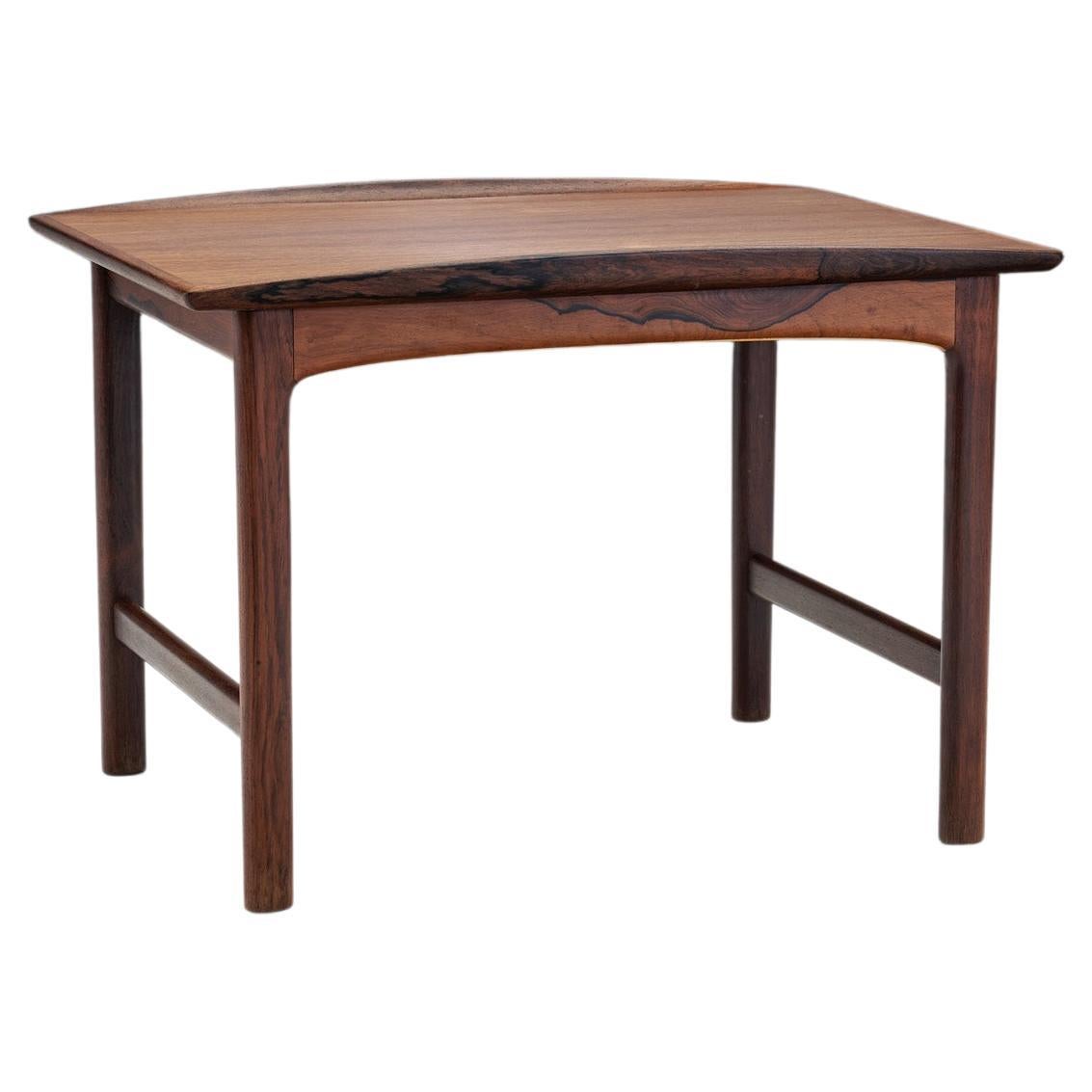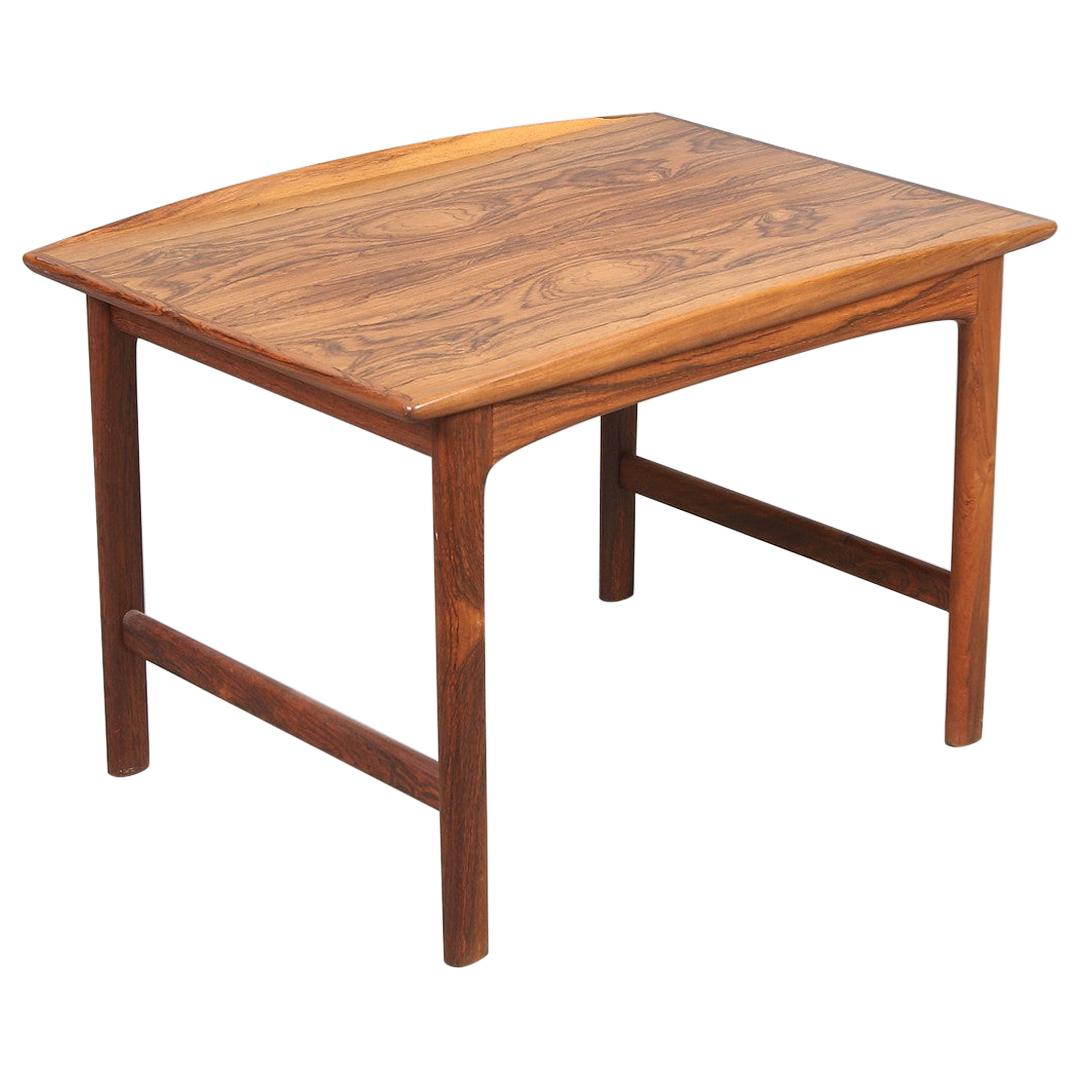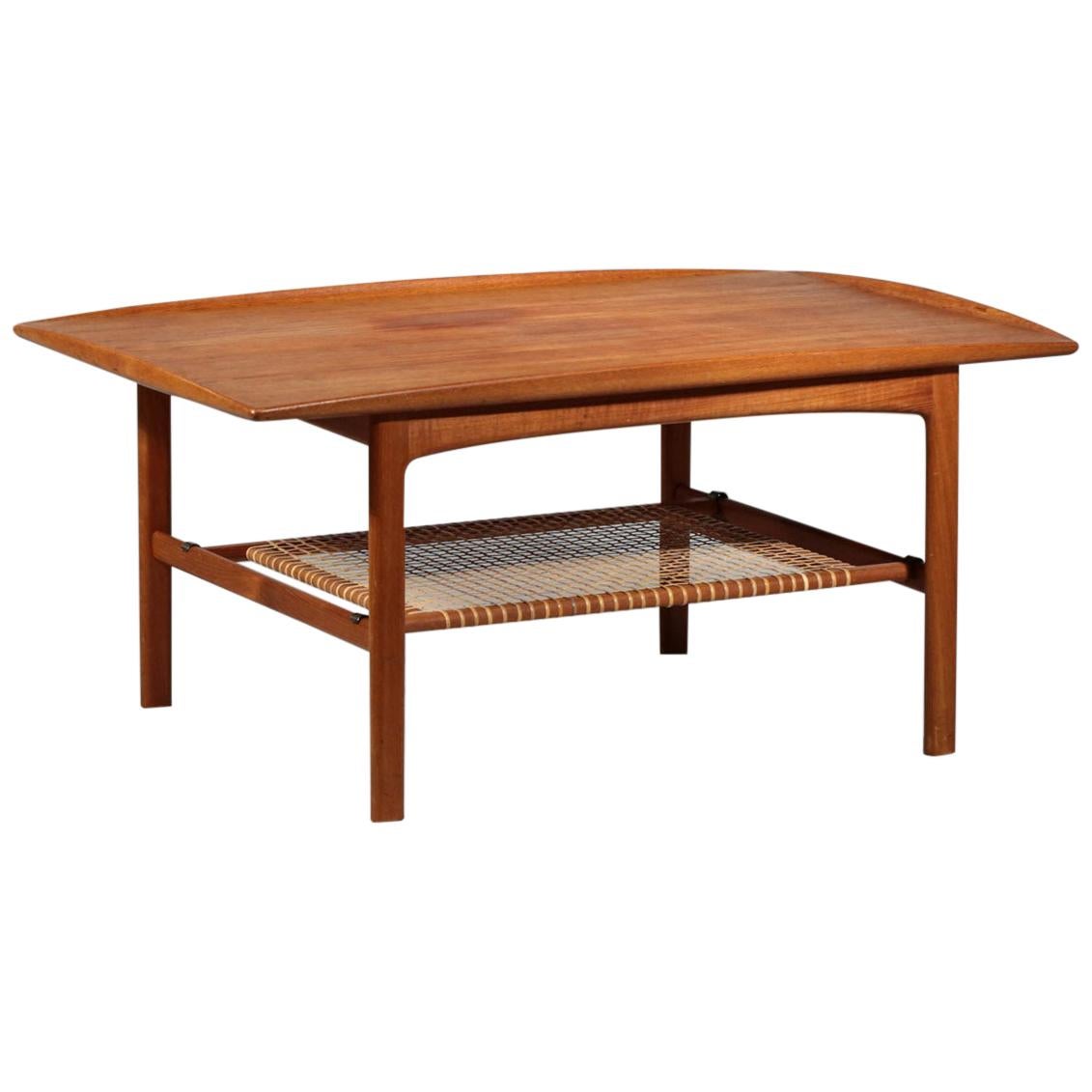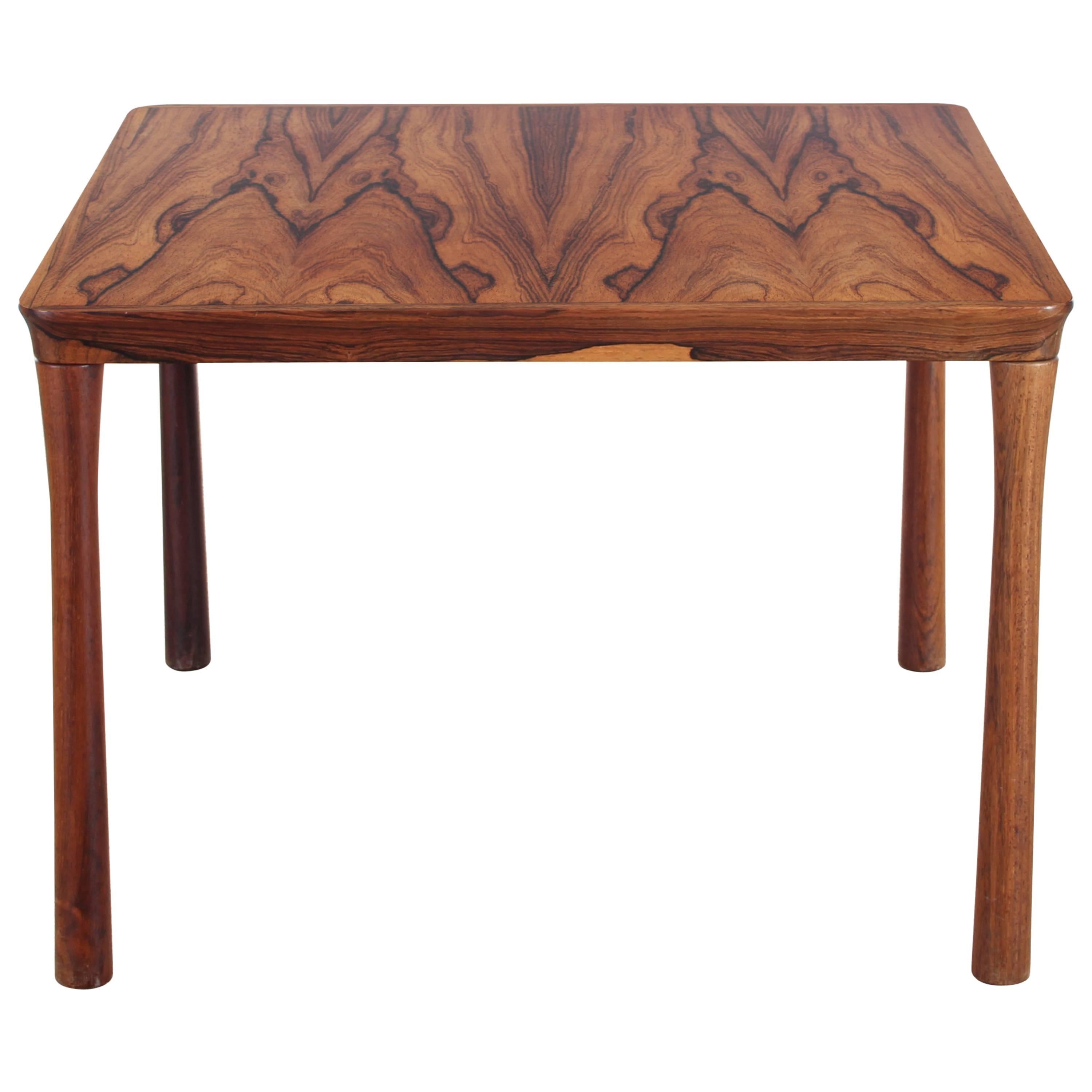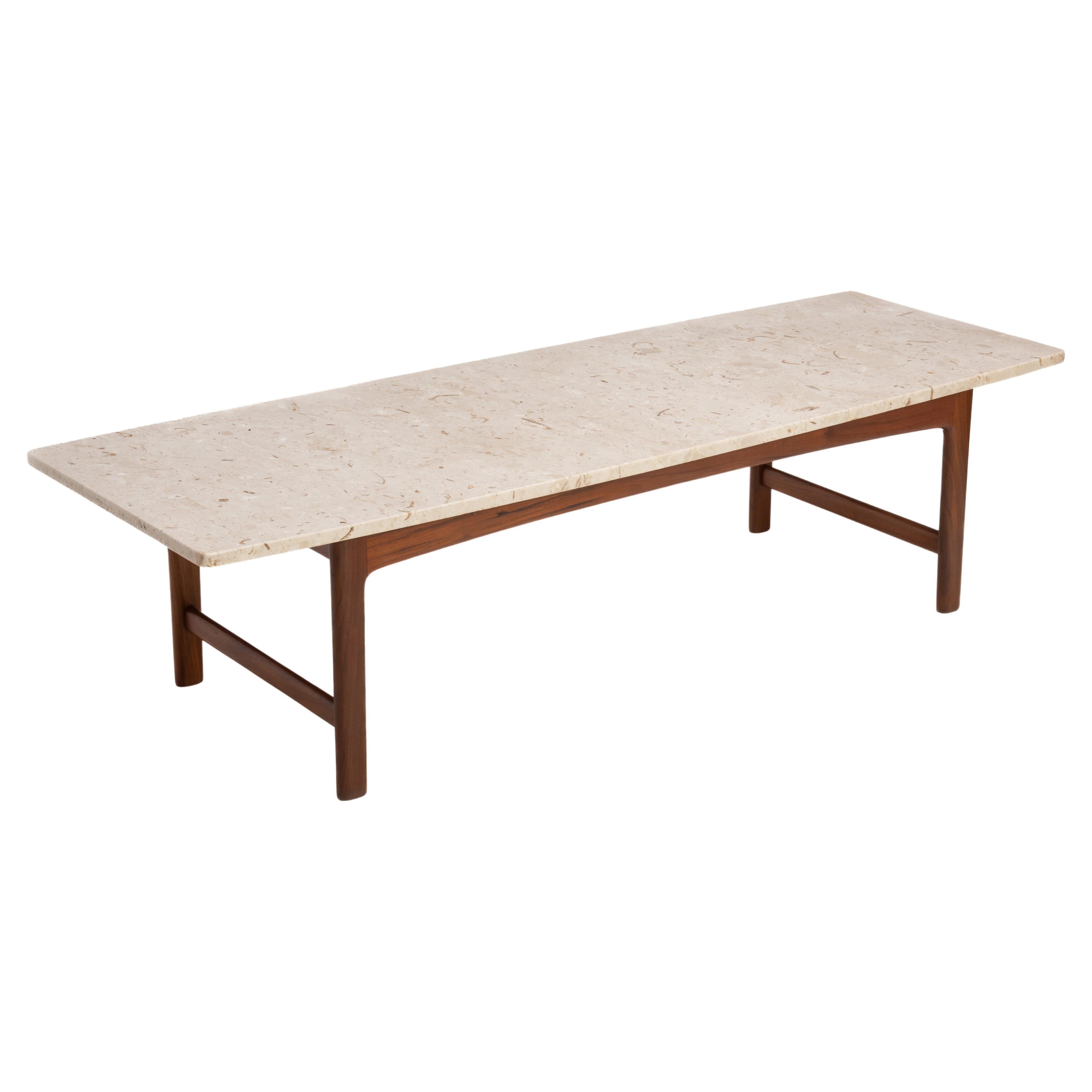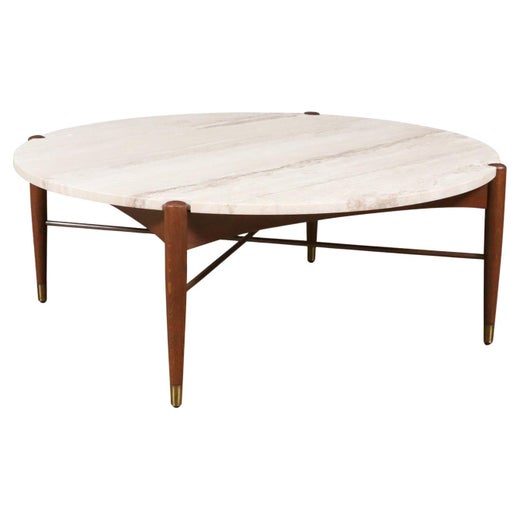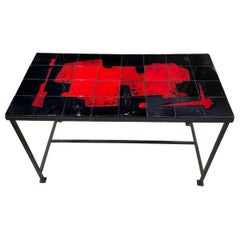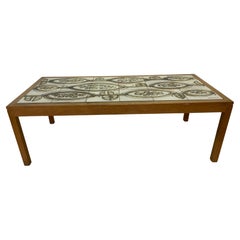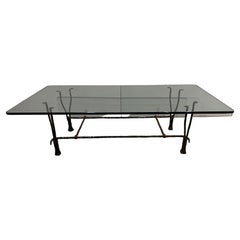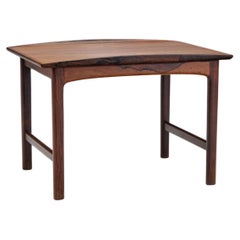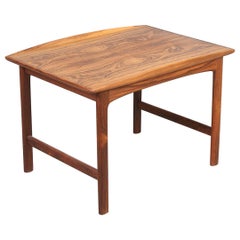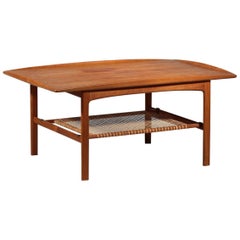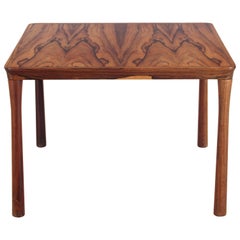Folk Ohlsson Tingströms 1950, Teak Metamorphic Coffee/ Diner Table Model Sesam
About the Item
- Creator:Tingströms (Manufacturer),Folke Ohlsson (Artist)
- Dimensions:Height: 22.5 in (57.15 cm)Width: 51 in (129.54 cm)Depth: 22 in (55.88 cm)
- Style:Scandinavian Modern (Of the Period)
- Materials and Techniques:
- Place of Origin:
- Period:
- Date of Manufacture:1950
- Condition:Wear consistent with age and use. Dimension when the table is open: Height 29 inches Width 51 Depth: 43.5.
- Seller Location:palm beach, FL
- Reference Number:1stDibs: LU6124227234332
Folke Ohlsson
Folke Ohlsson pioneered the “knock-down” revolution of furniture, making the innovative flat-pack means of manufacturing and shipping common practice. Credited with playing a significant part in bringing Scandinavian modern forms to the United States, he was an international designer who created attractive pieces that are highly coveted by today’s collectors.
In Sweden, Studio Ljungs Industrier AB is the large family-owned parent company of Duxiana (in America, DUX). While leading the design team for Studio Ljungs Industrier in his native Malmö, Ohlsson visited the West Coast of the United States in 1950 and opened DUX Inc., to expand the company’s global footprint. DUX put into practice an idea that Ohlsson patented for the so-called “knock-down,” or “KD,” chair, a term referencing easy, flat-pack assembly. It saved DUX space in warehouses and money on transportation and was a concept that would inspire hundreds of subsequent companies — most notably fellow Swedish brand IKEA.
Integrating American upholstery with Swedish knock-down hardware and wooden frames, Ohlsson and DUX revolutionized the furniture industry. The manufacturer consistently worked with brilliant mid-century modern designers — among them Bruno Mathsson, Edward Wormley and Alf Svensson — expanding the brand’s portfolio and establishing credibility as a design source. Today vintage DUX sofas and dining chairs are valuable collector’s items, and the space-saving attributes and efficiency associated with the company’s modular designs continue to influence manufacturers all over the world.
Partly because of the affordability of DUX’s furniture — as well as an understandable affinity for the simplicity, warmth and coziness of Scandinavian modern design — postwar America embraced Ohlsson’s vision. One of Ohlsson’s best-known designs is the Profil lounge chair, built on a teak frame that can rock or recline with the push of a lever, while the wool bouclé upholstery is sumptuous and stylish. Another iconic collection is the clean, minimal Pasadena set of sofas, footstools and armchairs, fashioned from solid walnut with brass sabots.
The Milano Triennale and the “Good Design” exhibition series at New York City’s Museum of Modern Art distinguished Ohlsson with more than 30 awards. In 1964, he was honored with Sweden’s Royal Order of Vasa decoration by King Gustav VI Adolf because of his role in exporting modern Scandinavian aesthetics to America. Ohlsson’s designs were also produced by Bodafors and Fritz Hansen.
On 1stDibs, find a selection of Folke Ohlsson seating, tables, case pieces and storage cabinets.
- ShippingRetrieving quote...Shipping from: Delray Beach, FL
- Return Policy
More From This Seller
View AllVintage 1950s French Mid-Century Modern Coffee and Cocktail Tables
Iron
Mid-20th Century Danish Coffee and Cocktail Tables
Ceramic, Wood
Early 20th Century Italian Tables
Stone, Marble
1990s French Coffee and Cocktail Tables
Wrought Iron
Mid-20th Century French Mid-Century Modern Nesting Tables and Stacking T...
Iron
Vintage 1970s French Mid-Century Modern Vases
Glass
You May Also Like
Mid-20th Century Swedish Scandinavian Modern Side Tables
Wood
Vintage 1960s Danish Scandinavian Modern Coffee and Cocktail Tables
Hardwood
Vintage 1960s Danish Mid-Century Modern Center Tables
Rattan, Teak
Vintage 1950s Swedish Coffee and Cocktail Tables
Rosewood
Vintage 1960s Swedish Scandinavian Modern Side Tables
Teak
Vintage 1960s Swedish Scandinavian Modern Coffee and Cocktail Tables
Travertine
